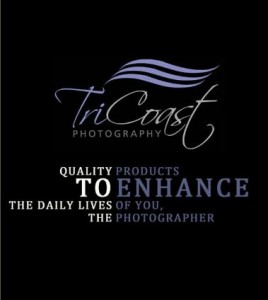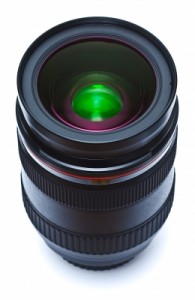 The other day I wrote a general article about some of the photography workshops out there that I wasn’t too enamored with. Now, I’m going to talk about a workshop that was HANDS DOWN, THE BEST WORKSHOP EVER.
The other day I wrote a general article about some of the photography workshops out there that I wasn’t too enamored with. Now, I’m going to talk about a workshop that was HANDS DOWN, THE BEST WORKSHOP EVER.
As per my usual review policy, these guys have no clue I’m reviewing them, I have received nothing from them (other than some stellar education) and they haven’t promised to buy me a beer.
TrCoast is a team of photographers from Texas. At the time I took their workshop (March 2010), the team consisted of Mike Fulton and Cody Clinton, with assistance from Pete Quinn.
The workshop was about OCF (Off-Camera Flash) and was a 5 day event through the Triangle Institute of Photography in Pittsburgh, PA. If you are lucky enough to catch these guys at a PPA affiliate school, DO IT! If not, they travel and offer 2 and 3 day workshops on the subject. See information here: TRICOAST WORKSHOPS.
My initial introduction to the topic of OCF was through TroCoast’s manual on the subject: TTL FLASH GUIDE. Yes, it’s $99. Spend it. You won’t be sorry.
Since the workshop, they have also come out with a 2 Set DVD. I do not own this, YET. It’s on the list. I have no clue what’s on it – but I”m going to go out on a very short limb and say you’ll probably want to get it too, and right now it’s on sale for $99 (use the code INTRO during checkout), too: WIRELESS FLASH TTL 2 DISK DVD SET
These guys, their book and their workshop saved my butt. I was just getting ready to drop outdoor shooting from my offerings, but now I can confidently shoot outdoors and know how to do my settings and what to do with my equipment so as to get the best possible shot.
Below is a review I wrote of the workshop shortly after its conclusion:
I had the utmost pleasure of being a student of TriCoast’s for a class they conducted at the Triangle Institute of Professional Photography March 21-26, 2010.
The title of the class was “Cutting Edge Lighting Techniques.”
I emailed Mike Fulton prior to the class, since the class was OCF techniques and I had very little experience with this and wanted to make sure I would not be at a disadvantage. He replied promptly and assured me that with a 5 day class schedule (as opposed to the 3 days they normally cover these concepts) that we would have plenty of time to cover the basics to make sure that everyone understood them.
Part of the description of the workshop used the phrase “no secrets!” That is 100% correct – there were NO SECRETS. Everything that was asked, was answered and there were no pitches to “buy my product” to learn it all. In fact – although TriCoast has their own line of products that they were selling at the instructors selling night / swap night, they did not mention this product line in class. The only indicator that they had a product line was on a banner in a corner of the classroom.
The class was organized into 1 evening orientation, 4 full days of classroom and shooting and a final 1/2 day of classroom.
The first day was spent covering all of the basic concepts of off-camera flash using TTL and E-TTL. We were encouraged to get out our gear and walk through the settings as they explained them, so that we were comfortable with that part of the process. Originally, the first and second day was to be 1/2 day class room and 1/2 day shooting, but the 1st day weather prohibited that plan and the first day was all classroom and days 2, 3 and 4 were spent shooting.
On Day 2 we reviewed the concepts presented on Day 1 to clear up any additional questions and then we headed out to a local church with our models.
There were 19 photographers in class, 5 Nikon/Fuji shooters and 14 Canon shooters. I was in the Nikon group, which worked out very well as we were able to combine our gear (flashes) so that those of us with only 1 flash were able to try out methods that used 2 and 3 flashes. I assume the Canon groups did the same.
On Day 3, we each brought 5 images from Day 2’s shooting to review in the morning. We then covered how to use the Radio Popper system with our flashes. The previous day we had only used line-of-sight IR methods. TriCoast then passed out Radio Poppers to everyone in class to use for the day. I was astounded, knowing the cost of these units. How gracious and trusting of TriCoast. And how awesome that we were given the opportunity to “try before you buy” although there was no push to purchase these. Line-of-sight will work in a lot of cases, but the Radio Poppers help immensely.
After class time, we headed out to shoot outdoors, again with a bunch of models. The models rotated through the groups so that we had a variety of subjects to practice on. Occasionally we had a period of time without a model during the rotating – no big deal, if we found ourselves with out a model or were waiting for the next model to show up – we just practiced on each other.
During all the times we were shooting, each group had an instructor with them to cover any issues or questions. Cody spent a lot of time with the Nikon group, since he was the instructor most versed in Nikon cameras. At times there were model-specific camera function questions that he couldn’t answer – but a quick Google check on his internet-capable phone would solve the problem.
On day 4 we again reviewed photos from day 3’s shooting and then covered how off-camera flash can be combined with studio flashes by incorporating a different type of Radio Popper. We were free at this point to practice these methods or any method presented previously in the week. OR we could come to the classroom with specific questions that weren’t covered. I spent most of this day practicing the off-camera flash techniques with my group. Again, we had several models to work with.
Day 5 (half day) : We reviewed photos from Day 4 and then spent the rest of the morning in class while Mike. Pete and Cody presented their school-photography system. I believe the subject matter depended on what we wanted to talk about, and the majority of the class was interested in this topic.
I can’t say enough positive things about the TriCoast crew. I went to the class, knowing that OCF techniques were my weakest skill (to the point that I was going to eliminate outdoor sessions from my offerings) and left the class with full confidence that I can now handle these types of shoots.
All 3 instructors were highly knowledgeable and very personable. They were down to earth and their primary focus was that we understood what we were doing to that we were able to do the techniques on our own.
5 stars across the board!
And of course, 5 Wootness! points:







